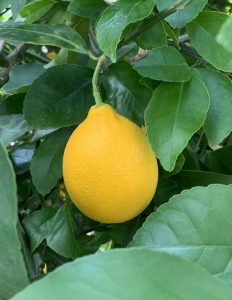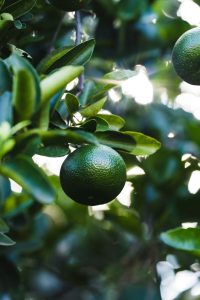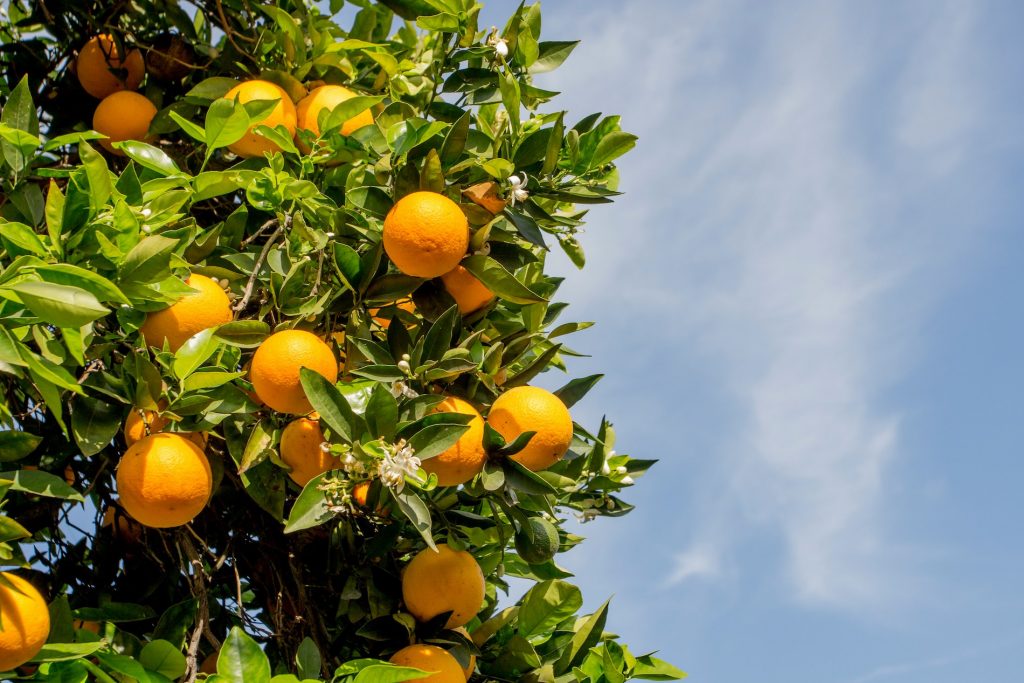Welcome to our blog post on citrus trees! Citrus are not only beautiful additions to any garden or landscape, but they also offer a variety of benefits, including fresh and tangy fruits, fragrant blossoms, and vibrant green foliage. Whether you are a seasoned gardener or a beginner, this blog aims to provide you with valuable information and tips to help you successfully cultivate and care for your own citrus.
Citrus fruit trees belong to the Rutaceae family and are native to Southeast Asia. They are primarily grown for their edible fruits, which are known for their high vitamin C content and refreshing taste. Some common types include oranges, lemons, limes, grapefruits, and tangerines. These trees are known for their glossy, dark green leaves, beautiful and fragrant white blossoms, and vibrant fruits that range from various shades of orange to yellow and green.

The purpose of this blog is to provide readers with a comprehensive resource on citrus growing, covering their cultivation, care, and troubleshooting. Whether you have a small backyard garden, a balcony, or even an indoor space, citrus fruit trees can be grown successfully with the right knowledge and care. By sharing useful tips, techniques, and insights, we aim to empower and inspire citrus fruit tree enthusiasts to create thriving and bountiful citrus gardens.
Through this blog, we hope to address common questions and concerns that gardeners may have, offer guidance on selecting the appropriate variety for various climates, and provide step-by-step instructions on planting, watering, fertilizing, pruning, and protection from pests and diseases. We will also delve into the fascinating world of biodiversity, exploring the different types of citrus fruits and their unique characteristics.
Growing citrus fruit trees has numerous benefits for aesthetics, homegrown fruit, fragrance, and the environment. They are visually appealing and can enhance the overall aesthetics of a garden or landscape. These trees have lush green foliage and vibrant fruits, adding color and beauty to any space. Their distinct shape and stature can also act as a focal point, creating an attractive focal point in the garden.
Growing citrus fruit at home allows individuals to have access to fresh, homegrown fruit. Citrus fruits like oranges, lemons, and grapefruits are not only delicious but also packed with essential vitamins and nutrients. Having these fruits readily available in one’s backyard ensures a constant supply of nutritious produce without the need to rely on store-bought options. Citrus are known for their pleasant fragrance. The blossoms of these trees emit a refreshing and invigorating scent, which can uplift the ambiance of any outdoor area. The fragrance of citrus blossoms is often associated with relaxation and can create a calming and soothing atmosphere.
Lastly, growing citrus offers numerous environmental benefits. These trees act as natural air purifiers, cleaning the surrounding air by absorbing pollutants and releasing oxygen. Additionally, they provide shade, reducing the heat island effect and lowering energy consumption for cooling buildings in hot climates. Citrus also attract beneficial insects, promoting biodiversity and a healthy ecosystem.
Before I get into a few citrus fruit tree types, I recommend further research. Check out my book, Backyard Big: Growing Food in Your Backyard for a thorough description of citrus and care tips for growing food in your backyard. For an excellent online resource, you can’t be the University of California Backyard Orchard page.
What are the 4 Main Citrus Fruits?

There are many citrus tree varieties and I will cover just four in this blog. Orange trees are evergreen trees that produce delicious, sweet, and tangy fruits known as oranges. They are typically round or oval with a thick, orange-colored rind and juicy, segmented flesh. Oranges are rich in vitamin C and are popular for their refreshing taste and versatility in various culinary uses.
Lemon trees, on the other hand, yield bright yellow, acidic fruits with a sour taste. Lemons are widely used for their juice, zest, and aromatic flavor in cooking, baking, and beverage making.
Lime trees produce small, green, and tart fruits called limes, which are commonly used in culinary applications, particularly in beverages like cocktails and margaritas.
Lastly, grapefruit trees bear large, round or oval fruits with a yellow or pinkish flesh that can be sweet or slightly bitter.
Are Citrus Trees Hard to Care for?
Citrus fruit trees require regular care, but with the right practices, they can be relatively easy to care for. They thrive in full sun, so it is important to select a location in your garden that receives at least six to eight hours of direct sunlight each day. It is also crucial to consider the climate in your region, as they prefer warm temperatures and are sensitive to frost.
Citrus prefers well-drained soil that is rich in organic matter. Before planting, ensure the soil is properly prepared by loosening it and incorporating compost or aged manure to improve its fertility and drainage. Adjust the soil pH to a slightly acidic level, between 6.0 and 6.5, as this is ideal for growth.
When purchasing citrus saplings, choose healthy and disease-free specimens from reputable nurseries. Look for strong, well-developed root systems and avoid trees with visible signs of pests or diseases. Opt for small to medium-sized saplings, as these tend to adapt better to transplanting.
Dig a hole that is slightly wider and deeper than the root ball of the tree. Gently remove the sapling from its container, being careful not to damage the roots. Place the tree in the hole, ensuring that it sits at the same level it was growing in the container. Backfill the hole with soil, firming it gently to eliminate air pockets. Do not bury the trunk of the tree and leave a slight depression around the base to aid in watering.
Citrus fruit trees require regular watering, especially during the growing season. Water deeply but infrequently, allowing the soil to dry out slightly between watering sessions. Mulching around the base of the tree helps retain moisture and suppresses weed growth. Fertilize the trees with a balanced citrus fertilizer a few times a year, following the recommended dosage. Prune the trees to maintain shape, remove dead or diseased branches, and promote airflow. Regularly inspect the trees for pest infestations and take appropriate measures to control them. Additionally, protect the trees from cold temperatures and frost by covering them or moving potted trees indoors during winter.
Pruning citrus fruit trees is important for maintaining their shape, promoting airflow, and facilitating fruit production. It is recommended to prune during late winter or early spring before new growth begins. Remove any dead, damaged, or crossing branches. Thin out the canopy to allow sunlight to reach all parts of the tree. Trim back excessive growth to encourage branching and ensure a balanced structure. Train young trees by selecting a central leader and removing competing branches to establish a strong framework.
Citrus can be susceptible to various pests and diseases, including aphids, scale insects, citrus leaf miners, fungal diseases like citrus canker or powdery mildew, and citrus greening disease (HLB). Regularly inspect the trees for signs of infestation or disease and take appropriate measures for control. This may include applying organic or chemical insecticides, pruning affected branches, or using horticultural oils to smother pests. Maintaining good tree health through proper watering, fertilization, and overall care can help prevent many pest and disease problems.
Citrus are sensitive to cold temperatures and frost, which can damage or kill them. In regions with mild winters, protecting citrus fruit trees may only require wrapping the trunk with insulation or covering the tree with frost cloth during cold nights. In colder regions, consider planting citrus fruit trees in pots so they can be moved indoors during winter. If planted in the ground, construct a windbreak or use frost blankets to protect the tree. Avoid pruning or fertilizing in late summer or fall, as this can stimulate new growth that is vulnerable to frost damage. Providing adequate mulch around the base of the tree can help insulate the roots during winter.
What About Harvest and Use?
The timing of citrus fruit harvest can vary depending on the specific variety and climate. Generally, citrus fruits are ready to harvest when they reach their full color and have a firm texture. However, it is essential to taste-test a few fruits to ensure optimal flavor and sweetness. For most varieties, harvesting occurs in late fall to early winter.
To harvest citrus fruits, gently twist or cut the fruit from the tree, leaving a short stem attached. Avoid pulling or tugging, as this may damage the fruit or branch. Use pruning shears or a sharp knife to cut the fruit if necessary. Take care not to drop or bruise the fruits during the harvest process.
Citrus fruits can be stored at room temperature for several days if they are to be consumed soon. However, for longer storage, place them in a cool and well-ventilated area, such as a refrigerator or cellar. Store them in a mesh bag or a shallow container lined with paper towels to prevent excess moisture buildup. Citrus fruits can also be preserved by juicing them and freezing the juice in ice cube trays or canning the juice to enjoy their refreshing taste throughout the year.

